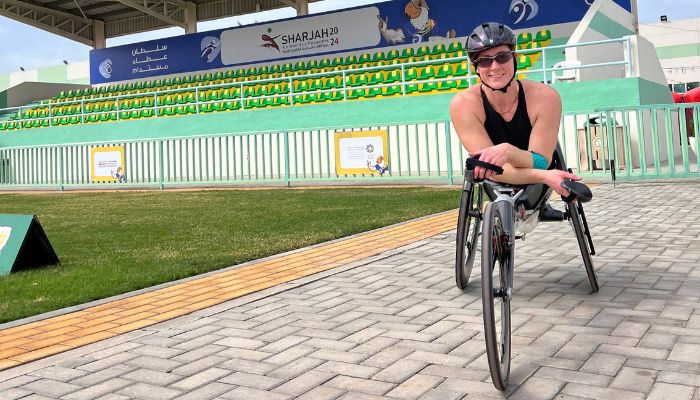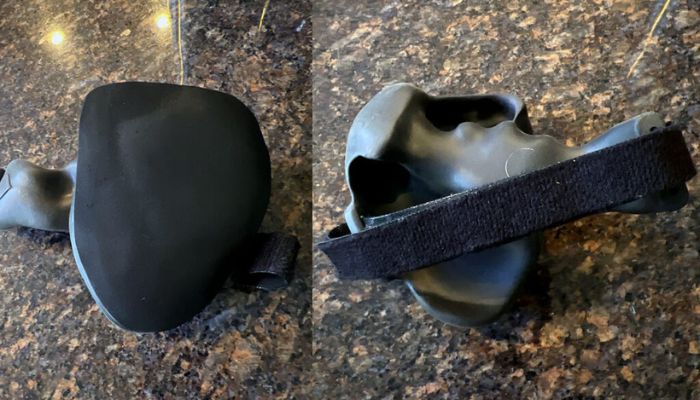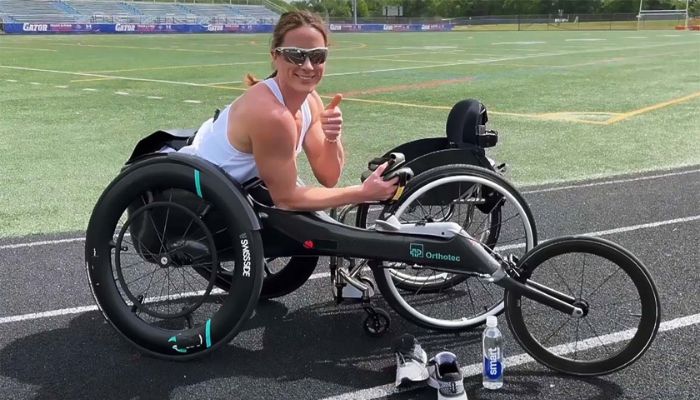Tatyana McFadden Aims for Gold Medal at Paralympics with 3D Printed Gloves

“Games wide open” is the underlying slogan of the 2024 Summer Olympic and Paralympic Games, opening in Paris later this week. Numerous athletes from all over the world will be doing their best to win the coveted medals in their discipline. However, it takes more than just the necessary talent, iron discipline and a strong team to make it – you also need the right tools. Paralympic participants especially need equipment that perfectly meets their needs and is highly personalized. To ensure this, many athletes and their outfitters rely on innovation and the latest technologies, including 3D printing.
Take, for example, the American athlete Tatyana McFadden, who has announced that she will be competing in the 2024 Paralympic Games with 3D-printed gloves. The 3D-printed gloves are expecting to play a key role in enabling the American record holder in the 400m distance to reach the very top in wheelchair racing. They were developed together with the 3D printing service provider CRP USA and are designed to meet the athlete’s requirements.

Paralympic medalist Tatyana McFadden at the 4th West Asian Para Games in Sharjah, UAE, where she set two new world records and won six medals (photo credits: Tatyana McFadden)
For those who are not well-versed in the sport, in wheelchair racing, there is constant contact between the hand and the wheel, resulting in high frictional resistance that traditional gloves often cannot withstand for long. For the athletes, however, it is not only the quality of the gloves that is decisive, but also the precision and comfort – all points that traditionally manufactured gloves only achieve to a limited extent.
“My first wheelchair racing gloves were called ‘harness gloves’. They were shaped like thumbs and made of heavy-duty fabric with rubber padding. Their softness made me feel the impact every time I hit the hand ring. By the 2008 Paralympic Games, my team and I began making hard gloves. We would take plastic beads, melt them in a pot of boiling water, and then mould the plastic to my hands. This process took days to perfect. Sometimes we would have to start over and throw the whole plastic glove back in the water. Once perfected, I did not let the gloves out of my sight because they would melt if left in the car or in the heat for too long. Over time, the plastic would wear down, so we made the gloves thick, but they were heavy,” McFadden recalls.
In 2015, the athlete’s team began considering 3D printing, and a year later, CRP USA was tasked with developing strong, durable 3D printed gloves for McFadden. The demands on the racing gloves are extremely challenging, as they not only have to be strong and durable, but also light, stiff and resistant – in all weather conditions. In particular, the latest version of the 3D-printed gloves has been improved in terms of grip and comfort.
“When I met with the CRP USA team,” explained McFadden. “We also talked about heat, rubber, weather effects, and straps for the gloves so they can stay in my hands better. When competing outside, we face various weather conditions, and I want to be ready for anything. My gloves have cracked in the past. My strokes produce a lot of force when I hit the hand ring, and my previous gloves lasted less than a year. I also wanted a better way to add rubber to the hand rings. The CRP USA team listened to my needs and managed to satisfy them in the best possible way.”

The 3D-printed racing gloves in Windform XT 2.0, used in training and competitions, front and back view (photo credits: Tatyana McFadden)
On the Road to Gold With 3D-Printed Gloves
CRP USA used the material Windform XT 2.0 for production, which is a composite material with outstanding mechanical properties that enable the finished product to withstand high frictional resistance. This also extends the service life and durability of the gloves. The racing gloves were 3D printed using selective laser sintering and impress with their flexibility, cushioning and high level of comfort. The rubber that was also used is a conventional product that was cut to the exact dimensions of the athlete and then applied to the gloves with an adhesive.
The team also managed to achieve a significant weight reduction in the model by hollowing out the parts and adding an internal structure. The Windform gloves weigh only about 100 grams, whereas conventional gloves weigh 50% more. The lower weight contributes to more agility and speed during a competition. The first tests of the 3D-printed gloves were extremely positive.
I remember using the gloves in Windform XT 2.0 for the very first time on the track and on the road. I was so impressed by how light and durable they were. My hands felt so light, it felt like I wasn’t holding onto anything. When I first put my hands into the glove, it was so smooth. They had also built in two holes where I could strap on the gloves to my hands instead of using additional clips
This example shows once again how 3D printing in elite sport can help to improve the quality of equipment and give athletes a better feel and confidence in their gear. 3D printing not only sets new standards for sports equipment, but also solves manufacturing challenges. In any case, we will certainly be following along as she once again seeks to win gold with the 3D printed gloves. You can find out more about CRP USA HERE.

Tatyana McFadden is ready for the Paralympics thanks to her 3D-printed gloves (photo credits: Tatyana McFadden, Instagram)
What do you think of the 3D printed gloves made for Tatyana McFadden? Let us know in a comment below or on our LinkedIn, Facebook, and Twitter pages! Don’t forget to sign up for our free weekly newsletter here for the latest 3D printing news straight to your inbox! You can also find all our videos on our YouTube channel.
*Cover Photo Credits: Olympics.com






